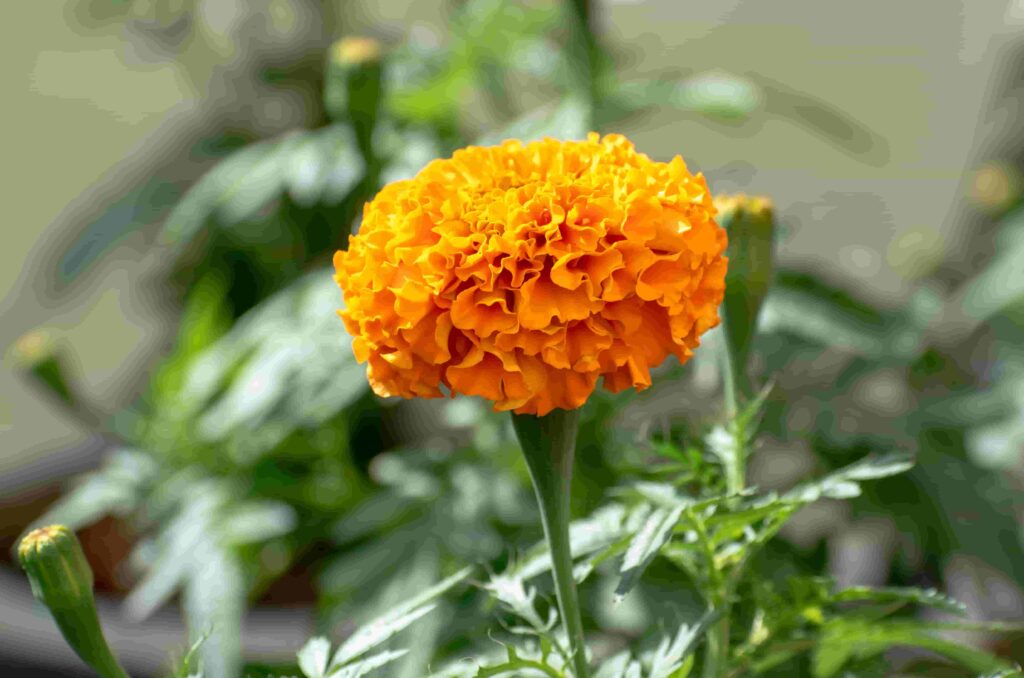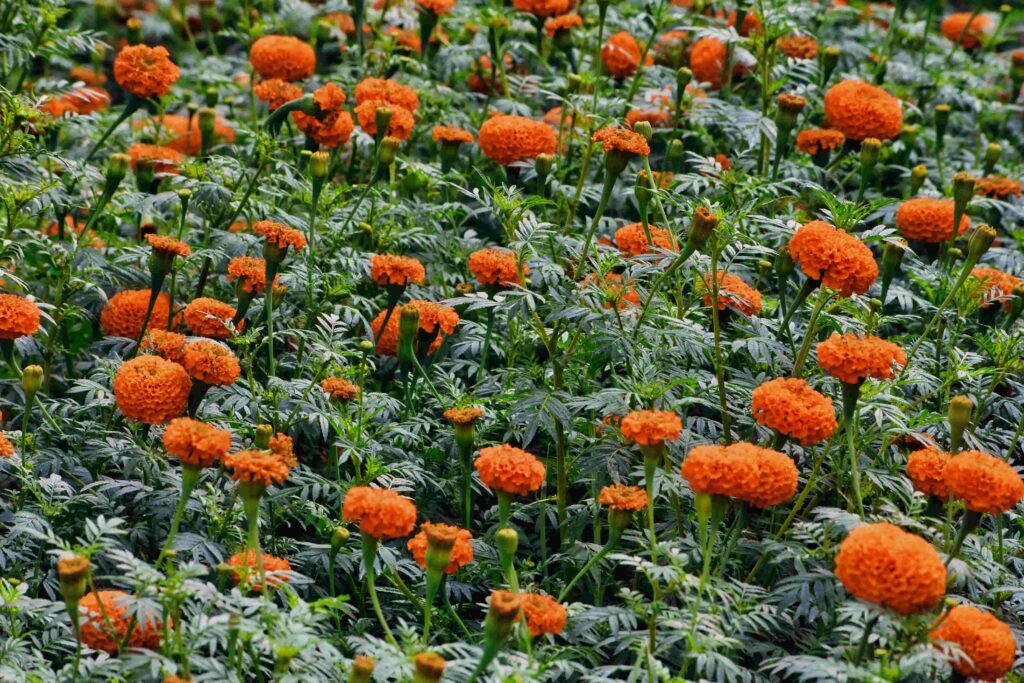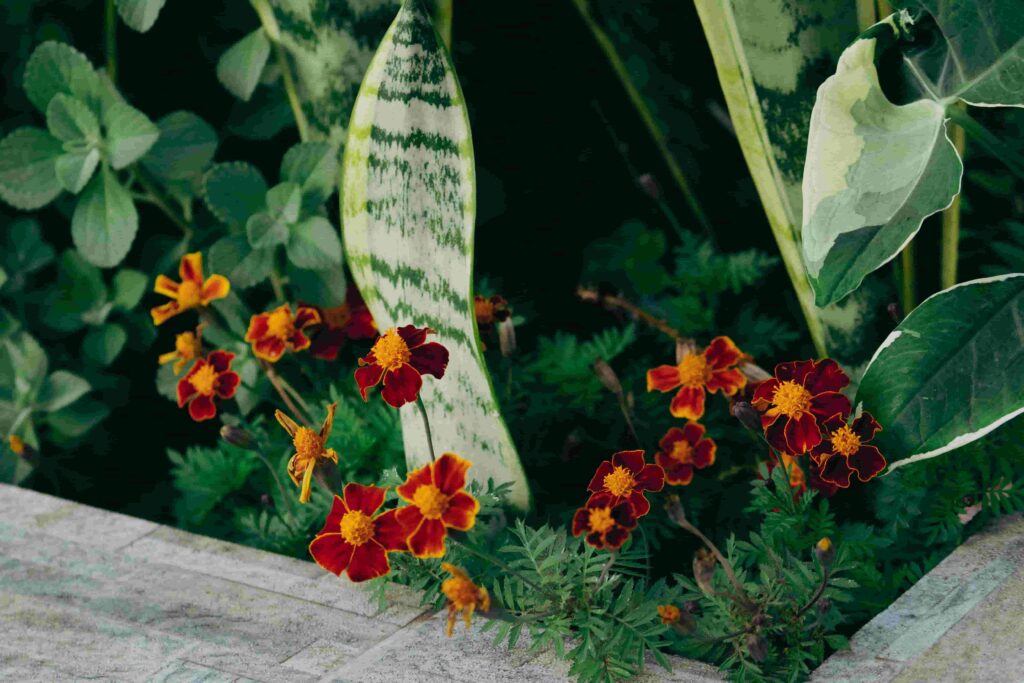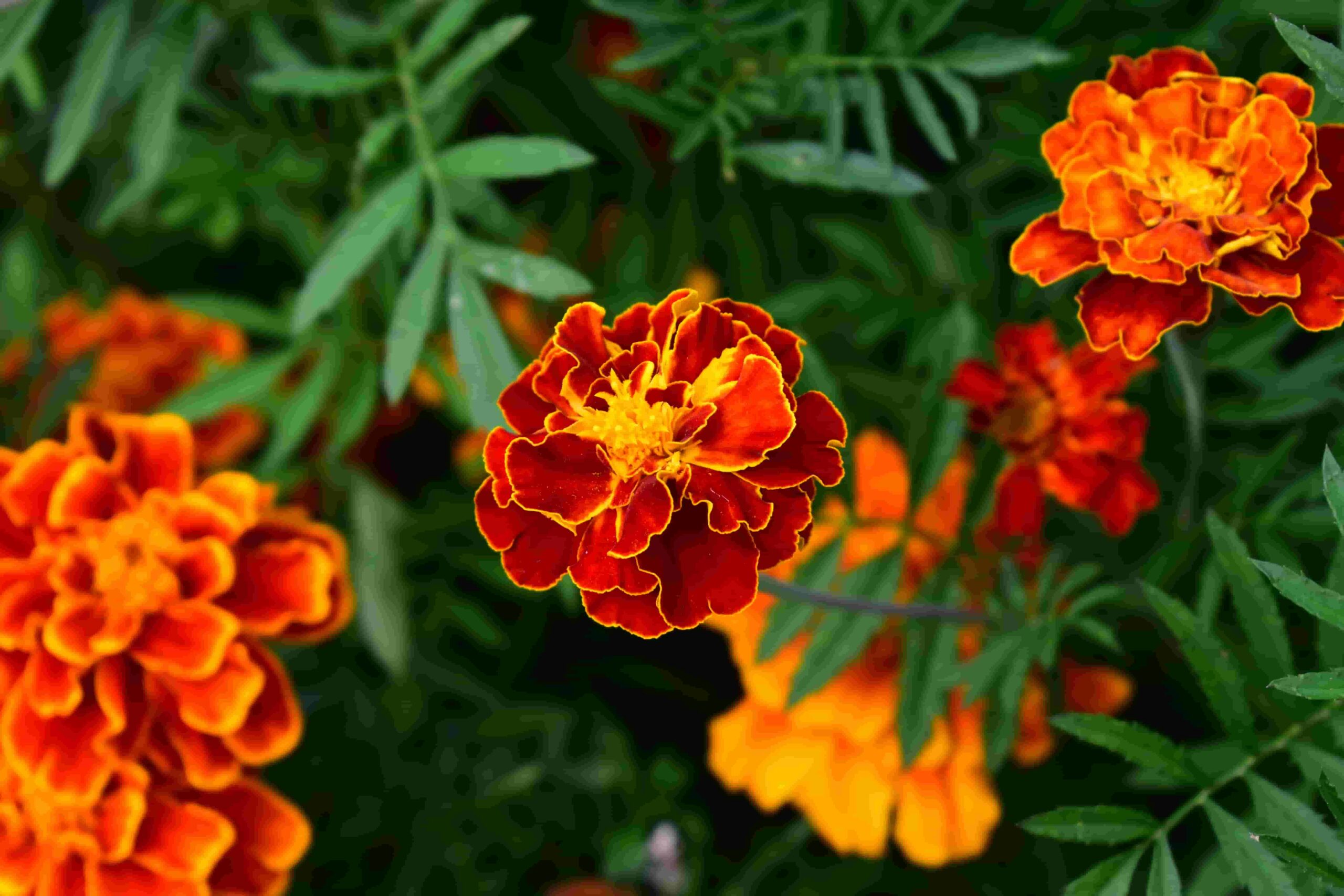Marigolds, with their vibrant colors and beautiful blooms, are a popular choice among gardeners. These hardy perennials are simple to grow and offer a splash of color all summer long. This article will examine the beauty and advantages of them, including their diverse cultivating methods, potential health advantages, and use as a pest deterrent. So, let’s dive in and discover why marigolds are a must-have in any garden!
Table of Contents
- 1. Introduction: Welcoming Marigolds
- 2. The Types of Marigolds
- 3. Planting and Growing Marigolds
- 4. Caring for Marigolds: Watering and Fertilizing
- 5. Marigolds as Natural Pest Repellents
- 6. Companion Planting with Marigolds
- 7. Marigolds and Their Health Benefits
- 8. Harvesting and Using Marigolds
- 10. Conclusion
- 9. Frequently Asked Questions (FAQs)
1. Introduction: Welcoming Marigolds

Marigolds (Tagetes) are beautiful flowering plants that belong to the Asteraceae family. Originating in the Americas, these plants have been nurtured for centuries due to their decorative and healing attributes. Marigold flowers are known for their vibrant colors, including shades of yellow, orange, and red, which make them a favorite choice for adding splashes of color to gardens, flowerbeds, and containers.
2. The Types of Marigolds
Marigold plants come in various types, each with its own unique characteristics. Here are some popular marigold varieties:
African Marigolds (Tagetes erecta)
African marigold plants are tall, upright plants that can reach a height of up to three feet. They produce large, fully double flowers in vibrant shades of yellow, orange, and gold. These plants are excellent for adding height and drama to your garden.
French Marigolds (Tagetes patula)
French marigold plants are of a smaller size when contrasted with African marigold. They grow up to one foot tall and produce smaller flowers. These are are available in a wide range of colors, including yellow, orange, red, and bicolor variations. They are great for edging, containers, and companion planting.
Signet Marigolds (Tagetes tenuifolia)
Signet marigold plants are low-growing and bushy plants. They have finely divided foliage and produce clusters of small, single flowers. These are known for their citrusy fragrance and are often used in herb gardens, edging, and as bedding plants.
3. Planting and Growing Marigolds

Marigold plants are a great choice for both novice and seasoned gardeners because they are reasonably simple to grow. Here are the steps to successfully plant and grow these plants:
Selecting the Right Location
Choose a location that receives full sun, as marigolds thrive in bright sunlight. They thrive in soil that drains well and can withstand a broad spectrum of soil types.
Starting from Seeds
You can start marigold plants from seeds indoors or directly sow them in the garden. Plant the seeds 4–6 weeks prior to the last date of frost if starting indoors. Once the threat of frost has gone, move them outside.
Planting Outdoors
Eliminate weeds from the soil and use a garden fork to loosen it. Create holes that are just a little bit bigger than the seed or seedling’s root ball. Marigold varieties might vary in size, thus plant spacing should be determined by that kind.
Watering and Mulching
Regularly water the plants to keep the soil moist but not soggy. Mulching the area surrounding the base of the plants can aid in moisture retention and reduce weed growth.
Deadheading and Pinching
To encourage continuous blooming, remove faded flowers regularly. Pinching back the plants when they are young can promote bushier growth and more abundant blooms.
4. Caring for Marigolds: Watering and Fertilizing

Marigold plants are relatively low-maintenance plants, but they still require proper care to thrive. Here are some essential tips for watering and fertilizing these plants:
Watering
Marigold plants prefer consistent moisture, so water them deeply when the top inch of soil feels dry. Prevent overwatering, as it can result in root rot and other related problems.
Fertilizing
Marigold plants are not heavy feeders but benefit from occasional fertilization. Apply a balanced, water-soluble fertilizer following the instructions on the package. Be cautious about excessive nitrogen, as it may promote abundant foliage growth but reduce flower production.
5. Marigolds as Natural Pest Repellents
Marigold flowers are not only beautiful but also serve as natural pest repellents. The strong scent of these flowers can deter many common garden pests, including aphids, whiteflies, and nematodes. Here are some ways to use marigolds for pest control:
Interplanting
Interplant marigolds with vegetables, herbs, or other ornamental plants susceptible to pests. The scent of marigold flowers can help repel insects and protect neighboring plants.
Companion Planting
Companion planting is an effective way to maximize the benefits of marigolds. For example, planting marigold plants alongside tomatoes can help deter pests like nematodes and protect the tomato plants.
6. Companion Planting with Marigolds

Marigold plants are excellent companion plants that provide various benefits to neighboring plants. Here are some popular companion plant combinations involving marigold:
Marigolds and Tomatoes
As mentioned earlier, marigold planted near tomatoes can help repel pests and protect the tomatoes from nematode damage. The strong scent of marigold flowers masks the odor that attracts harmful insects.
Marigolds and Beans
Growing marigold alongside beans can deter bean beetles and attract beneficial insects like ladybugs, which prey on pests. This can help keep your bean plants healthy and productive.
Marigolds and Roses
Marigolds are often planted near rose bushes to repel aphids and other common rose pests. The bright colors of marigold flowers also create an eye-catching contrast with the delicate blooms of roses.
7. Marigolds and Their Health Benefits
Beyond their ornamental value, they have been traditionally used for their medicinal properties. While scientific research on marigolds’ health benefits is ongoing, here are some potential uses:
Skin Health
Marigold extracts or oils are commonly used in skincare products for their anti-inflammatory and wound-healing properties. They may help soothe skin irritations, promote tissue regeneration, and support overall skin health.
Digestive Support
Marigold tea, made from dried marigold flowers, is believed to have digestive benefits. It is often used to relieve indigestion, stomach cramps, and other gastrointestinal issues.
Immune Support
Marigolds contain compounds with potential immune-boosting properties. They are rich in antioxidants, which can help protect the body against oxidative stress and strengthen the immune system.
8. Harvesting and Using Marigolds

Harvesting marigolds is a rewarding experience, as you can enjoy their beauty and utilize them in various ways. Here’s how to harvest and use marigold flowers:
Harvesting Flowers
Pick marigold flowers in the morning when the blooms are fully open. Snip the flowers just above the foliage using clean gardening shears. Remove any leaves or debris from the flowers.
Drying Marigolds
To dry marigold flowers, tie them in small bundles and hang them upside down in a dry, well-ventilated area. Once fully dry, store the dried flowers in airtight containers away from direct sunlight.
Culinary Uses
Marigold petals can be used to add a pop of color to salads, soups, or herbal teas. They have a slightly citrusy and peppery flavor, so use them sparingly to enhance your culinary creations.
Crafting and Potpourri
Dried marigold flowers can be used in various crafts, such as homemade potpourri, sachets, or scented candles. Their vibrant colors and pleasant scent add a touch of nature to your DIY projects.
10. Conclusion
Marigolds are not only visually appealing but also offer numerous benefits to gardeners. Their vibrant colors, various types, and easy cultivation make them a delightful addition to any garden. Whether you plant them for their beauty, use them as natural pest repellents, or explore their potential health benefits, marigolds are sure to bring joy and color to your outdoor space. So why not embrace the charm of marigolds and experience their many wonders in your garden today?
9. Frequently Asked Questions (FAQs)
1. Are marigolds toxic to pets?
No, marigolds are generally non-toxic to pets. However, it’s always best to prevent pets from ingesting large quantities of any plant material to avoid digestive upset.
2. Can marigolds grow in containers?
Yes, marigold plants are well-suited for container gardening. Choose dwarf or compact varieties that won’t outgrow the container, and ensure proper drainage to prevent waterlogged soil.
3. Do marigolds require deadheading?
Deadheading marigold plants is not necessary for their survival, but it can promote more blooms and a neater appearance. Getting rid of fading flowers will promote continued flowering.
4. Can I store marigold seeds for the next season?
Yes, marigold seeds are easy to save for future planting. Allow the flowers to fully mature and dry on the plant. Harvest the dried flower heads, remove the seeds, and store them in a cool, dry place.
5. How long do marigolds bloom?
Marigolds typically bloom throughout the summer until the first frost arrives. With proper care and deadheading, they can provide vibrant blooms for several months.

